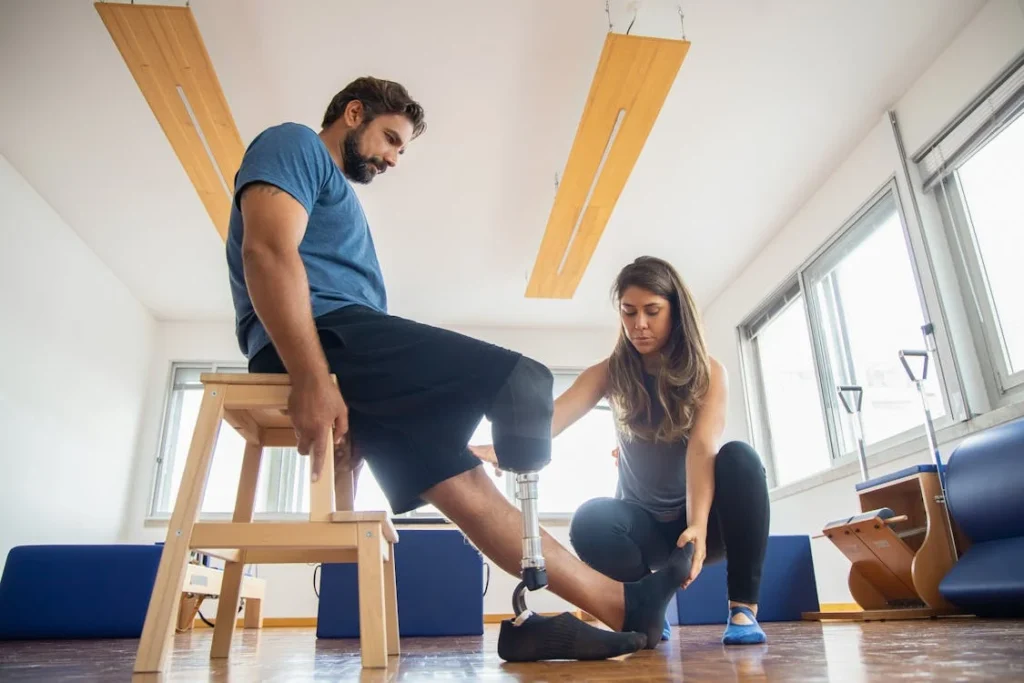Adjusting to life after a hemipelvectomy is a journey that requires both physical and emotional strength. The removal of part or all of the pelvis drastically changes how the body moves, balances, and supports weight. Walking, sitting, and standing all feel different, and learning to use a prosthetic is not just about wearing a new device—it is about retraining the body to move in a completely new way.
Physical therapy plays a crucial role in this process. It helps individuals rebuild strength, improve coordination, and regain confidence in movement. Without proper therapy, even the most advanced prosthetic can feel difficult to use. The right exercises and training techniques make the transition smoother, allowing individuals to reclaim their independence and mobility.
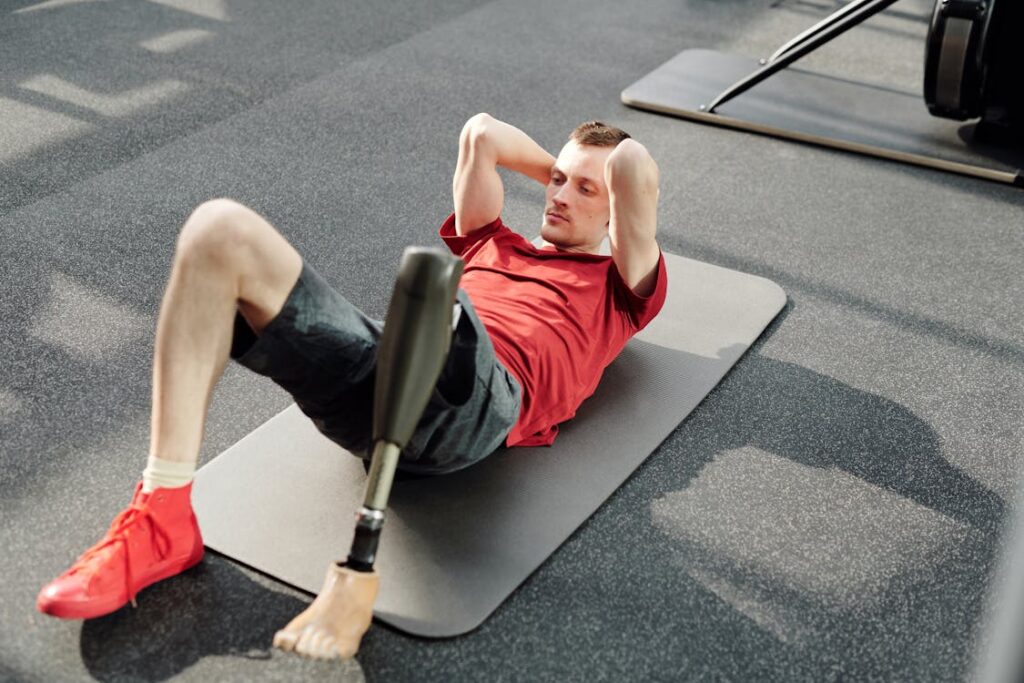
Building Strength and Stability After a Hemipelvectomy
Strengthening the Core and Remaining Limb
After a hemipelvectomy, the body must rely on new muscle groups to support movement. The loss of part of the pelvis changes the way weight is distributed, making it essential to strengthen the core muscles and the remaining limb.
Without proper muscle support, standing and walking with a prosthetic can feel unstable and exhausting.
Physical therapy focuses on strengthening the core muscles—specifically the abdominals, obliques, and lower back. These muscles act as the foundation for all movement, helping to stabilize the body while sitting, standing, and walking.
Exercises such as seated balance drills, resistance band training, and controlled abdominal contractions help build strength in a safe and controlled manner.
The remaining limb also plays a critical role in movement, taking on extra weight and responsibility. Strengthening the thigh, hip, and gluteal muscles ensures that the leg can support the body’s weight without excessive strain.
Exercises like leg lifts, step-ups, and supported squats help prepare the limb for prosthetic use, improving both endurance and control.
Improving Balance and Posture
One of the biggest challenges after a hemipelvectomy is maintaining balance. The loss of a pelvic structure affects weight distribution, making it harder to stay upright without swaying or feeling unsteady.
Physical therapy helps retrain the body to find a new center of gravity, improving stability and reducing the risk of falls.
Therapists use targeted exercises to enhance balance. Standing exercises with parallel bars, single-leg stability drills, and weight-shifting activities help patients become more aware of their body’s movements.
Over time, these exercises improve coordination, making it easier to walk and move with confidence.
Posture is another key factor in mobility. Without the full pelvic structure, some individuals develop a forward-leaning or uneven stance, which can cause discomfort and long-term strain on the spine.
Physical therapy focuses on proper body alignment, ensuring that the shoulders, hips, and back remain in the best possible position for balance and comfort.
Adapting to New Movement Patterns
Learning to move with a hemipelvectomy prosthetic is different from using other types of prosthetics. Unlike below-the-knee or above-the-knee amputations, a hemipelvectomy removes a part of the body’s core support system, requiring a complete re-learning of movement.
Patients must adjust to shifting weight differently, taking steps with more control, and engaging new muscle groups to maintain stability.
Therapists introduce controlled walking exercises to help individuals understand how to use their prosthetic effectively. These exercises begin with short, guided steps using parallel bars or a walker, allowing the patient to feel how the prosthetic responds to movement.
As strength and balance improve, the patient gradually progresses to more independent walking, increasing both speed and endurance.
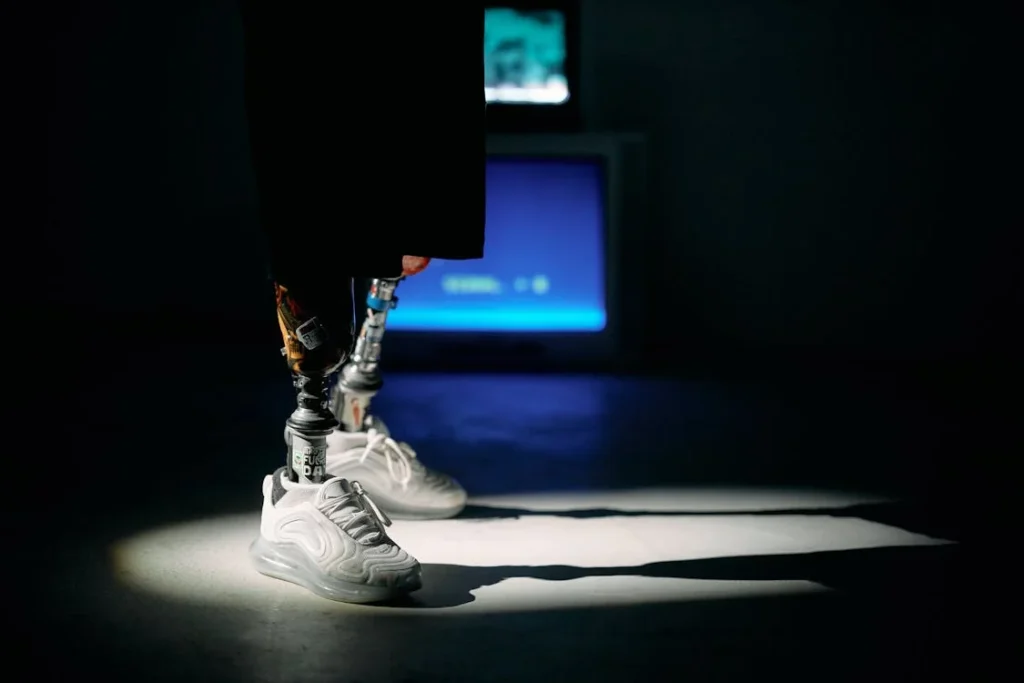
Gait Training and Walking with Confidence
Developing a Natural and Efficient Gait
Walking after a hemipelvectomy requires retraining the body to move in a way that feels stable and efficient.
Because the pelvis plays a key role in coordinating leg movement and balance, its partial or complete removal forces the body to find new ways to maintain stability. This is where gait training becomes essential.
Physical therapists focus on helping patients develop a smooth and controlled walking pattern with their prosthetic. The process starts slowly, with assisted walking exercises that allow the patient to feel how their body responds to movement.
Therapists guide patients in adjusting their posture, ensuring they are not leaning too far forward or to one side, which can lead to discomfort and strain.
As progress continues, the focus shifts to creating a natural step rhythm. Many patients initially struggle with hesitation, feeling as though their movements are unsteady.
Therapists use specialized techniques, such as walking on different surfaces, practicing turns, and stepping over small obstacles, to help build confidence in movement.
Over time, these exercises help create a fluid and energy-efficient walking pattern that reduces fatigue and improves mobility.
Managing Weight Shifts and Step Transitions
One of the biggest adjustments for hemipelvectomy patients is learning how to shift weight effectively.
Unlike traditional walking, where both legs share weight equally, a hemipelvectomy prosthetic requires intentional weight shifts to maintain balance.
Without proper control, individuals may find themselves feeling off-balance or struggling to take consistent steps.
Physical therapy introduces controlled weight-shifting drills that help patients gain awareness of their center of gravity. These exercises start with small, deliberate shifts from side to side while standing, allowing the body to adjust gradually.
As patients become more comfortable, they practice shifting weight while stepping forward, mimicking the natural movement of walking.
Step transitions are another critical part of gait training. Walking is not just about moving forward—it also involves stopping, turning, and adjusting to different walking speeds.
Therapists guide patients through exercises that improve coordination, such as practicing quick stops, changing directions smoothly, and stepping onto slightly raised surfaces.
These movements prepare individuals for real-world walking conditions, from navigating sidewalks to climbing stairs.
Reducing Fatigue and Conserving Energy
Walking with a prosthetic can feel tiring at first, especially when the body is still adjusting to new movement patterns. Many patients find that they expend more energy than before, making even short distances feel exhausting.
Physical therapy helps improve endurance by teaching strategies for conserving energy and reducing strain.
One important technique is optimizing step efficiency. Many new prosthetic users take uneven or overly cautious steps, which can make walking more difficult than necessary.
Therapists help patients refine their movements, ensuring that each step is intentional and well-controlled. A more natural gait means less wasted energy and greater walking comfort.
Breathing and posture also play a role in reducing fatigue. Slouching or holding tension in the shoulders can make movement feel heavier, while controlled breathing helps maintain endurance.
Physical therapists integrate posture corrections and breathing exercises into sessions, helping patients move more efficiently and comfortably.
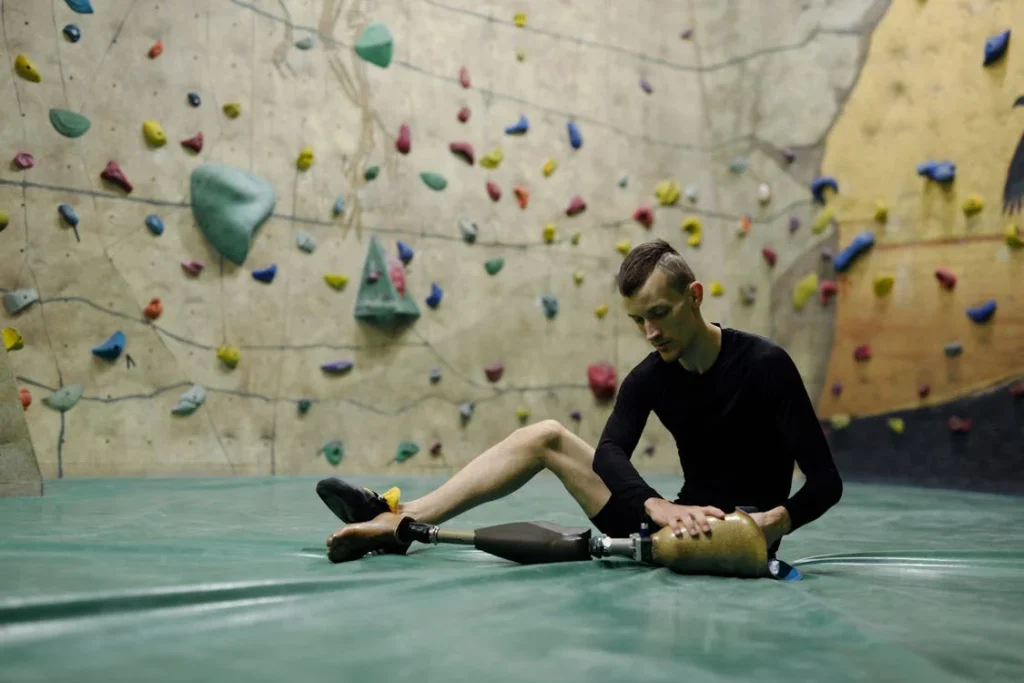
Overcoming Everyday Challenges with a Hemipelvectomy Prosthetic
Navigating Different Terrains and Surfaces
Walking on smooth, even ground is one thing, but real life involves all kinds of terrains—sidewalks, slopes, stairs, and uneven paths.
One of the biggest concerns for individuals adapting to a hemipelvectomy prosthetic is learning how to navigate these everyday surfaces safely and confidently.
Physical therapy plays a critical role in this adaptation. Therapists gradually introduce different walking conditions, allowing patients to practice moving on gravel, grass, inclines, and steps in a controlled environment.
Each surface presents unique challenges, requiring adjustments in weight distribution and step length. With guided practice, individuals learn how to shift their weight appropriately, maintain balance, and adapt their gait to prevent falls or discomfort.
Climbing stairs is another important skill that requires focused training. Many hemipelvectomy prosthetic users initially struggle with step height and balance while ascending or descending.
Therapists teach step placement techniques, such as leading with the stronger limb while going up and using controlled support when coming down. These skills build confidence in daily movement, ensuring that navigating stairs, ramps, and curbs becomes second nature.
Getting In and Out of Chairs and Vehicles
Sitting down and standing up may seem like simple actions, but after a hemipelvectomy, they require careful control to prevent strain or imbalance.
Without part of the pelvis for support, individuals may feel unstable or find that certain chairs make movement more difficult. Physical therapy provides training on how to sit and stand safely, using arm support, controlled movements, and proper posture.
Therapists also help patients practice getting in and out of vehicles, as this can be one of the most challenging aspects of daily life. Entering a car often requires a twisting motion that can feel unnatural at first.
Therapy sessions include step-by-step guidance on positioning the body correctly, using hand supports, and ensuring the prosthetic moves smoothly during transitions.
Carrying Objects and Using Both Hands While Walking
Daily life often involves multitasking—carrying bags, holding a phone, or opening doors while walking. With a hemipelvectomy prosthetic, balance and weight distribution change, making it more challenging to manage tasks that require both hands.
Many individuals instinctively shift their weight incorrectly or hesitate when trying to balance movement with carrying an item.
Physical therapy helps individuals develop safe movement habits while handling objects. By practicing walking while carrying small items, adjusting grip strength, and using shoulder stability techniques, patients build confidence in performing daily tasks.
Therapy also includes training on using mobility aids, such as canes or crutches, in situations where additional support is needed.
With consistent practice and professional guidance, these everyday challenges become manageable, allowing individuals to regain independence in both movement and daily activities.
Over time, these learned skills contribute to greater self-reliance and comfort in real-world situations.
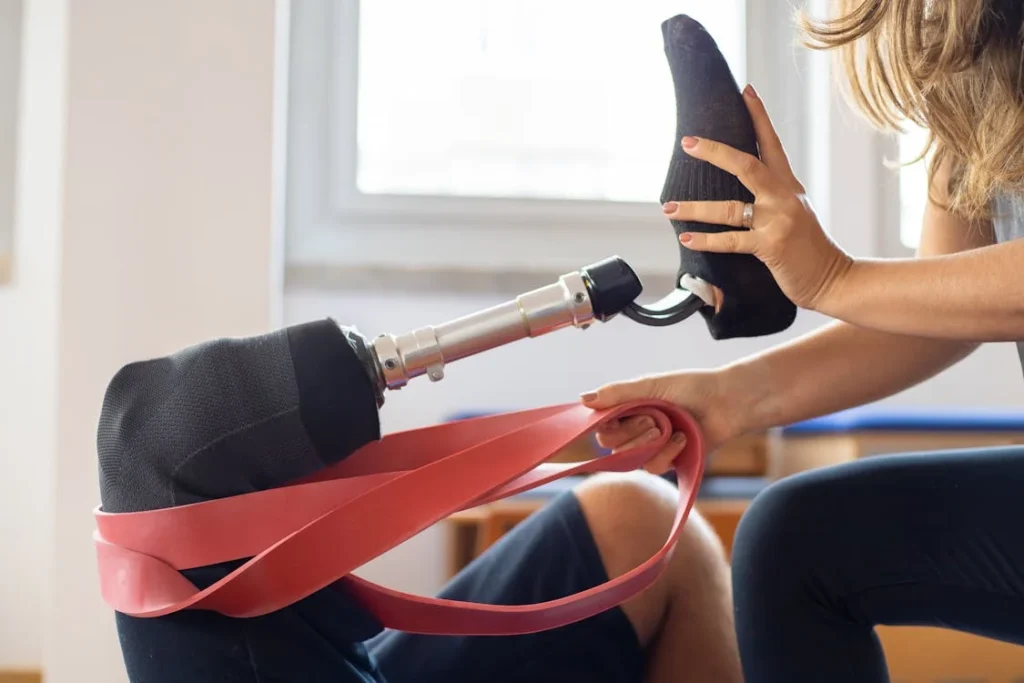
Emotional and Psychological Benefits of Physical Therapy
Building Confidence in Movement
One of the biggest hurdles after a hemipelvectomy is not just the physical adjustment but the mental and emotional challenge of trusting one’s body again.
Many individuals experience fear when they first start using their prosthetic, worrying about balance, falling, or whether they will ever walk naturally again. These concerns can lead to hesitation, which in turn affects overall progress.
Physical therapy provides structured guidance, helping individuals regain confidence step by step.
Each successful movement—whether it is standing up without assistance, taking a steady step, or walking a few extra meters—reinforces the idea that progress is possible.
Therapists provide encouragement and reassurance, helping patients recognize their strengths rather than focusing on limitations.
Repetition and consistency are key. The more a person practices walking and moving in a controlled environment, the more natural these movements feel.
Over time, individuals begin to trust their prosthetic as an extension of their body, rather than something separate or unfamiliar. This shift in mindset is crucial in regaining independence and a sense of normalcy in daily life.
Reducing Anxiety About Public Spaces
Many hemipelvectomy patients initially avoid public places out of fear of being stared at or struggling with movement in front of others. The thought of navigating crowded areas, uneven sidewalks, or unfamiliar spaces can feel overwhelming.
This anxiety can lead to social withdrawal, making it harder for individuals to engage in daily life or maintain relationships.
Physical therapy helps address these fears by preparing individuals for real-world scenarios. Therapists create controlled challenges, such as walking in simulated crowded areas, stepping onto buses or trains, or practicing movements in open spaces.
By gradually exposing patients to different environments, therapy helps remove the fear of the unknown.
The more familiar these movements become, the less overwhelming they feel in actual public settings.
Eventually, individuals find themselves moving with greater ease and confidence, allowing them to re-engage in social activities, work, and other aspects of daily life without hesitation.
Encouraging Emotional Resilience
Adjusting to a prosthetic is not just about learning to walk again—it is about adapting to a completely new way of life. Some days will feel frustrating, and progress may seem slow.
Moments of doubt are natural, but resilience is built through persistence and support.
Physical therapy offers more than just exercises—it provides a structured environment where patients can work through setbacks in a safe and supportive space.
Therapists help individuals set realistic goals, track improvements, and celebrate achievements, no matter how small. This positive reinforcement plays a significant role in keeping motivation high and preventing discouragement.
Additionally, engaging in therapy with others who are going through similar challenges can create a sense of community. Many rehabilitation centers offer group sessions or peer support programs where individuals can share experiences, encouragement, and advice.
This connection with others who understand the journey can be incredibly uplifting and motivating.
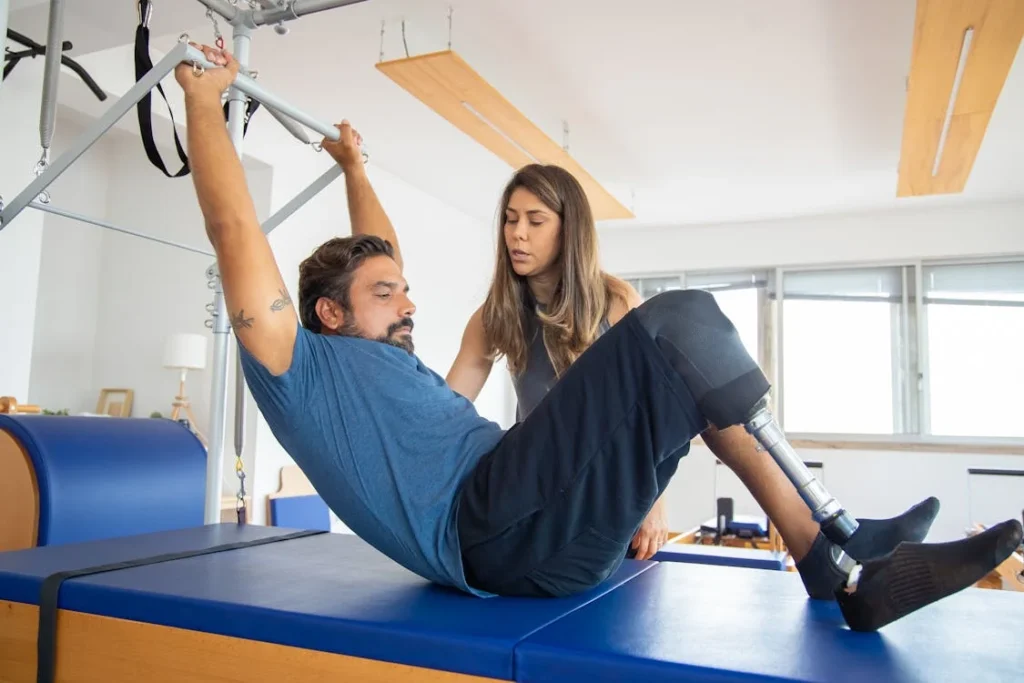
The Role of Advanced Rehabilitation Techniques in Prosthetic Adjustment
The Importance of Individualized Therapy Plans
Every hemipelvectomy patient has unique physical needs based on their level of amputation, muscle strength, and overall health. A one-size-fits-all approach does not work when it comes to prosthetic rehabilitation.
Physical therapists create customized therapy plans that cater to each individual’s specific challenges, ensuring that progress is made at a comfortable and sustainable pace.
The first step in rehabilitation is assessing the patient’s current mobility, muscle strength, and balance. This evaluation helps therapists design exercises that address specific weaknesses and improve overall function.
Patients who have been inactive for a long time due to surgery recovery may need to start with basic strength training before moving to more complex gait exercises.
Others who have maintained some level of movement may progress more quickly into advanced prosthetic training.
Therapists also consider lifestyle goals when designing a rehabilitation plan. Some patients may want to return to physically demanding jobs, while others may simply want to regain independence in daily activities.
By aligning therapy with personal goals, individuals stay more engaged and motivated throughout the process.
Using Technology to Improve Mobility
Modern rehabilitation incorporates advanced technology to make therapy more effective and engaging. One of the most promising developments is gamified rehabilitation, which turns physical therapy exercises into interactive challenges.
Virtual reality (VR) and motion-sensing technology allow patients to practice balance, coordination, and mobility in a controlled yet stimulating environment.
Gamified rehabilitation programs offered by Robobionics help patients improve their motor skills while keeping therapy sessions fun and motivating. These programs encourage users to set goals, track progress, and engage in dynamic exercises that mimic real-world activities.
By making therapy feel less like a chore and more like an interactive experience, individuals are more likely to stay consistent with their training.
Another innovative approach is robotic-assisted therapy, which uses motorized exoskeletons or treadmill-based systems to guide patients through walking movements.
These devices provide real-time feedback, helping users refine their gait patterns and improve step efficiency. Over time, this guided practice strengthens muscles and builds muscle memory, making independent walking feel more natural.
Integrating Functional Electrical Stimulation (FES)
For some patients, muscle weakness or nerve damage can make it difficult to activate certain muscle groups needed for balance and movement.
Functional Electrical Stimulation (FES) is a technique that uses small electrical impulses to stimulate muscles, helping them contract and build strength.
FES is particularly useful for hemipelvectomy patients who need additional support in activating core and leg muscles.
Physical therapists use this technology alongside traditional exercises to enhance strength training and improve coordination. By stimulating weak muscles, FES can help restore movement patterns and make walking with a prosthetic more efficient.
The Long-Term Benefits of Consistent Rehabilitation
Rehabilitation does not end once a patient becomes comfortable using their prosthetic. Long-term therapy ensures that mobility continues to improve, preventing setbacks and maintaining physical health.
Many individuals benefit from ongoing therapy sessions even years after their initial prosthetic training, as they refine their movement, strengthen their muscles, and adjust to any changes in their body.
Consistency is key. Even after completing formal therapy, maintaining an active lifestyle with regular movement exercises helps keep the body strong and adaptable.
Patients who stay committed to their mobility training experience fewer complications, better overall health, and greater independence in their daily lives.
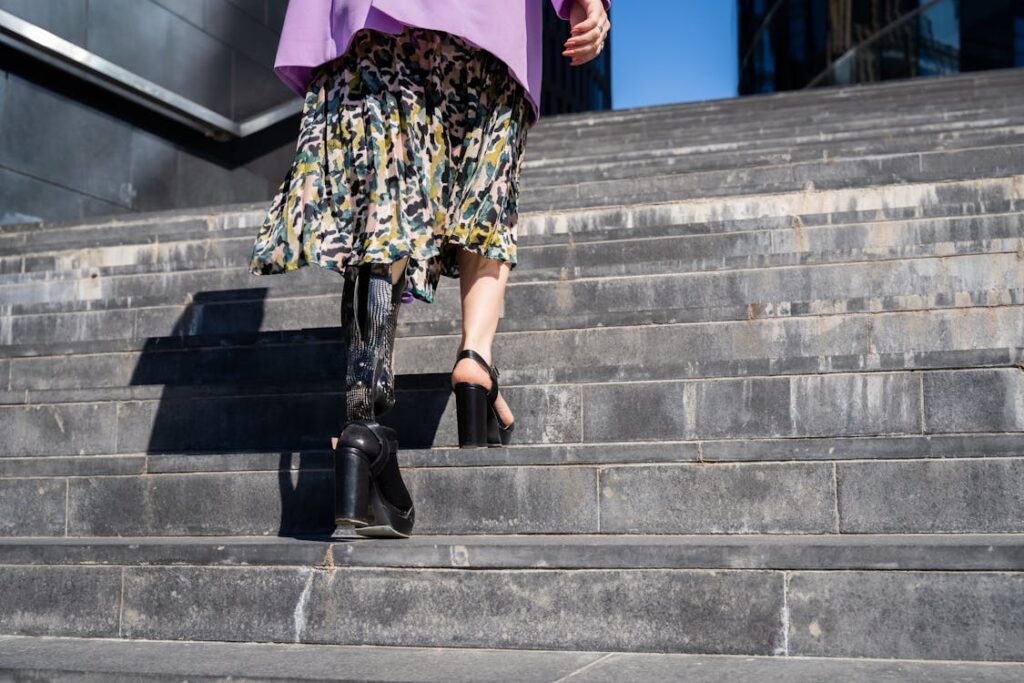
Long-Term Adaptation and Independent Living with a Hemipelvectomy Prosthetic
Developing Daily Routines for Mobility Maintenance
Once a hemipelvectomy patient becomes comfortable using their prosthetic, the focus shifts to maintaining long-term mobility and independence.
Even after completing physical therapy, daily movement exercises and strength training remain essential. Without consistent use of muscles and joints, stiffness, weakness, and discomfort can develop, making movement more challenging.
A structured daily routine helps keep the body strong and adaptable. Simple activities such as stretching, balance exercises, and controlled walking drills improve coordination and prevent muscle fatigue.
Many individuals find it helpful to integrate movement into everyday tasks, such as standing up without support, walking longer distances, or taking short breaks to move around throughout the day.
Hydration and proper nutrition also play a role in maintaining mobility. Strong muscles and healthy joints require adequate hydration, vitamins, and minerals.
Individuals who follow a balanced diet with enough protein, calcium, and essential nutrients experience better endurance and muscle recovery, making it easier to stay active and comfortable.
Overcoming Setbacks and Physical Challenges
Adapting to a hemipelvectomy prosthetic is not always a linear process. Some days will feel easier than others, and setbacks may occur.
Factors such as weather changes, minor injuries, or fatigue can impact mobility, making certain tasks feel more difficult. It is important to recognize that setbacks do not mean failure; they are a normal part of the long-term adaptation process.
When challenges arise, returning to basic physical therapy exercises can help. Strengthening core muscles, practicing balance, and refining gait patterns can quickly restore confidence in movement.
If discomfort persists, consulting with a prosthetist ensures that the prosthetic is still fitting correctly and functioning as needed. Adjustments may be necessary as the body changes over time.
Emotional resilience is just as important as physical strength. Staying motivated, setting achievable goals, and seeking support from peers or professionals can make a significant difference in staying active and engaged.
Many hemipelvectomy patients find that connecting with others who have undergone similar experiences provides encouragement and helpful advice for overcoming daily challenges.
Enhancing Independence with Assistive Tools
In addition to physical therapy and prosthetic training, various assistive tools can make daily life easier. Items such as grab bars in the home, mobility aids for long distances, and adaptive seating solutions can help individuals maintain independence without unnecessary strain.
These tools provide added security, allowing users to move freely without fear of losing balance or experiencing discomfort.
Some individuals benefit from wearing specialized footwear or using prosthetic liners that improve comfort and reduce friction.
The right equipment ensures that movement remains smooth and pain-free, preventing skin irritation or pressure sores that could interfere with mobility.
Technology continues to improve accessibility for hemipelvectomy patients. Smart prosthetics with microprocessor-controlled joints and weight-responsive designs are becoming more common, offering even greater adaptability and efficiency.
As advancements in prosthetic technology continue, users will have even more options to enhance their mobility and quality of life.
Conclusion
Adjusting to a hemipelvectomy prosthetic is a journey that requires patience, persistence, and the right support. Physical therapy plays a crucial role in helping individuals build strength, improve balance, and regain confidence in movement. With guided rehabilitation, users learn to walk efficiently, manage weight shifts, and navigate daily activities with greater ease.
Beyond physical recovery, therapy also fosters emotional resilience, reducing anxiety and empowering individuals to live actively and independently. The right combination of mobility training, assistive tools, and ongoing practice ensures long-term success, allowing users to adapt seamlessly to their prosthetic.
At Robobionics, we are committed to supporting individuals at every stage of their journey. From advanced prosthetic solutions to rehabilitation guidance, we help users restore their mobility and confidence. If you or a loved one is adapting to a hemipelvectomy prosthetic, contact us today to learn more about how we can assist you in regaining independence and enhancing your quality of life.



